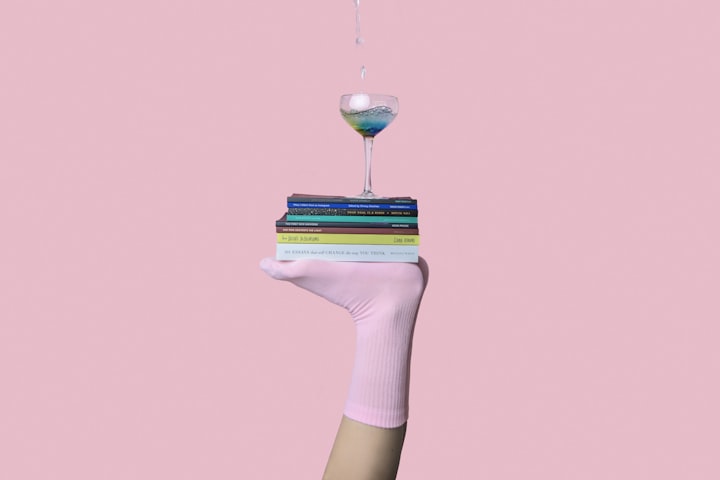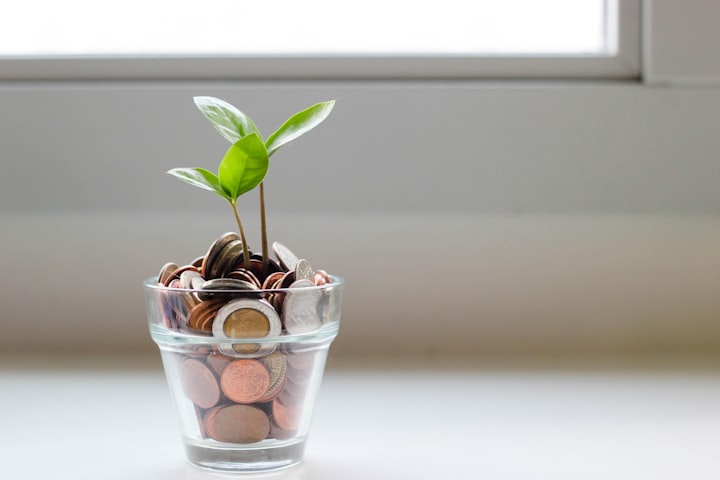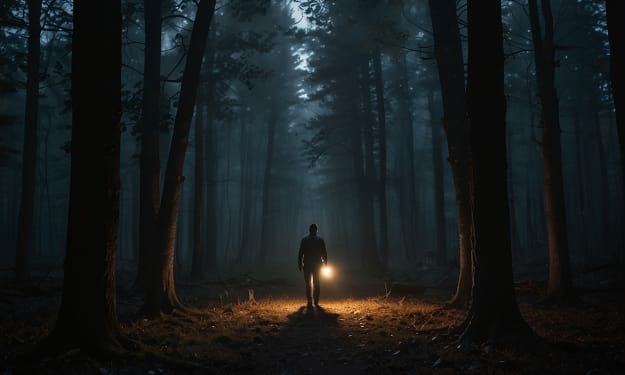Books to Read If You're Going Through a Quarter-Life Crisis
Overcoming the unique challenges of your 20s and 30s

Man, oh man. Turn on your vintage John Mayer albums (yes, he's now vintage), and let's talk about these books that will help you survive your quarter-life crisis.
As a teenager, I was fairly certain that your 30s were "middle age," and that the only reason that age seemed easier was because people in their thirties worked all the time--of course everything feels easier. These grown-ups have no time to think about "real problems."
Hahahaha
Let's just skip over commenting on the ridiculousness of my teenage brain.
Throughout my 20s, I experienced a lot of ups and downs–nay, I survived and learned from these ups and downs. And while I know we’re nowhere near smooth sailing, I can vouch for the glorious calm that often comes with the self-actualization of a fruitful quarter-life crisis. 🍇
Note: I acknowledge that there are systemic problems creating adverse circumstances for many Americans who are seeking stability, financial peace, and humane treatment in every sector of society, but my hope is that this piece provides humor and community, as well as literary resources from which to seek comfort during the anguish and uncertainty of quarter-life for all races, sexual orientations, and gender identities. I am not a psychologist, economist, or social scientist–I am an essay- and fiction-writer with a deep love of books and a great belief in the healing properties found in the literary themes which foster the shared human experience.
The American-ish Dream
The concept of the American Dream attracts a variety of people, most often those seeking to overcome adversity: those who have grown up impoverished, who have faced discrimination, who have moved hundreds or thousands of miles to a new country, and even those who have lived in the shadow of their parent or grandparent’s American-Dream-come-true.
It’s not always easy being the wind beneath your wings, Bette.
The reality is that the American dream has changed significantly over the last several decades. A greater percentage of the population is now facing difficulties trying to achieve it.
I mentioned recently that many of us in our mid-20s to mid-30s (our quarter life) are battling some historically significant economic downturns. Now, I won’t generalize and assume that everyone in that age-range is experiencing a crisis–let’s face it, some of you went to high school, college, then found your perfect spouse, purchased your dream home, and have been steadily climbing that blissful career ladder ever since. Kudos! I won’t discredit you for being one of the miraculous few.
However–somewhere in your soul, you too might need the perspective provided by these authors and characters.
Books For Your Quarter-Life Crisis
1. A Tree Grows in Brooklyn by Betty Smith
For much of my adult life, when asked about my favorite book (which happens surprisingly often when you’re an English teacher), my immediate response was always: A Tree Grows in Brooklyn.
The novel, which takes place during the first two decades of the 20th century, begins with 11-year-old Francie Nolan, the daughter of first-generation Irish-Americans and ends shortly after her 17th birthday. There are also sections of the novel that tell about the lives of her parents, Katie Rommely and Johnny Nolan.
The American Dream is part of the diagnosis of our quarter-life crises, and A Tree Grows in Brooklyn is a story where a girl grabs opportunity by the cojones.
Even the main metaphor of the novel–a tree (specifically: the tree of heaven)–represents survival.
“Young Betty [the author]…saw the tree as a symbol of survival, a living reminder of her own struggle to escape the pain and poverty of Williamsburg.”
–(from the introduction of a 1989 edition of the novel)
Francie Nolan is a boss. She teaches us that, when faced with adversity and uncertainty (I’m looking at you, 2020), tenacity and determination help us flourish and grow to survive our quarter-life crisis.
2. The Absolutely True Diary Of A Part-Time Indian By Sherman Alexie
I dusted off my old teacher toolbox for this one, but it deserves a spot on the list for so many reasons.
Arnold Spirit Jr. (aka “Junior”) is the narrator, or rather, author of the diary, and he is about to start his freshman year of high school. He was born with excess spinal fluid on the brain. His parents were often told by doctors that he would die from complications of this (known as hydrocephalus).
He survives but is left with a lisp and a stutter, too many teeth, terrible eyesight, and he often experienced seizures as a kid.
OH—did I mention he also lives on a Native American Reservation with his extremely poor family, including an alcoholic father?
Junior, like most of us, wants a better life. He wants to get the hell off the “Rez,” and his diary and doodles are his saving grace.
As we start to feel the itch of a quarter-life crisis, we start to confront our individual ambitions versus our communal (family or society) obligations. It’s hard enough to know what we need in life, but damn—considering what we want complicates things.
Junior is full of personal ambition, but his experiences and his moments of reflection teach him to slowly begin asserting himself in the right ways.
This is what we do in our twenties and thirties: we go into new jobs, new classrooms, and encounter intimidating circumstances and people. Once those experiences are through with us, we (hopefully, usually) acknowledge those experiences. And when we start to make confident decisions—that’s when we start coming out of that quarter-life crisis.
3. The Gifts Of Imperfection By Brené Brown
Here’s a moment of vapid honesty for you guys: I judge books by their covers.
Sometimes their titles, but definitely their covers.
And this book? That cover SCREAMS early-90s-self-help book.
Several years ago after some pretty trying times (read: shitty af) in my life, my dad sent me a copy of this book.
Okay, dad, I thought, I realize I’m a basket case, so thanks for sending me this crusty and gimmicky self-help book.
(I was clearly DEEP into my quarter-life crisis at this time)
Well, sometimes in life, especially if you’re a diagnosed case of severe clinical depression and anxiety, are going through a divorce, and teach hundreds of 13-year olds for 7 hours a day (they are really mean sometimes), the bottle of rosé and twenty hours straight of trash reality television STOP HELPING.
Yes, it’s true—rosé doesn’t always help.
Then you become desperate to change. You decide that maybe it’s time to target the disease, and not just cover up the symptoms.
So you pull out that book dad sent (because he loves you) and start reading.
“People may call what happens…’a crisis,’ but it’s not. It’s an unraveling—a time when you feel a desperate pull to live the life you want to live, not the one you’re ’supposed’ to live. The unraveling is a time when you are challenged by the universe to let go of who you think you are supposed to be and embrace who you are.”
Since it’s not a work of fiction, you become the character that learns the lessons, experiences the themes, and develops throughout the story. Brown taught me that authenticity and vulnerability help us open all the right doors and windows in this “pick-your-own adventure” we live in, and compassion gives you the light that helps you find courage.
When you have courage, authenticity, and compassion—your thoughts change, your priorities shift, and ultimately—you evolve.
4. Scary Close By Donald Miller
Donald Miller is an author known for getting pretty deep. He makes us, as the kids say, get all in our feelings.
Scary Close isn’t just about romantic relationships and intimacy. It’s about changing the nature of all our relationships. It’s about learning to be honest with ourselves and with others–as a husband, wife, sibling, colleague, teacher, or even a leader–instead of constantly performing.
As teenagers and further into our 20s, many of us with insecurities learn to put on a show. This show receives approval from our peers, our family members, and our superiors, so instead of facing who we authentically are, we let that version of ourselves take charge.
This is not sustainable, folks. Hence: the quarter-life and mid-life crises.
The act that we hide behind feeds into shame.
Did you ever watch The Little Shop of Horrors with Rick Moranis? We watch that every single Halloween.
Your shame is like Audrey II:
“Feed me, Seymour!”
Oof, and we feed that shame-- with self-deprecating humor and apologies.
Miller teaches us that if we face our shame (and stop feeding it), we can learn to drop the act. As scary as that sounds (hence the title), it allows us to actually connect with others.
That sounds scary, too, right? But guess what?
Don, as his friends refer to him (I’m not his friend.. yet) tells us that, by putting himself out there – his true and authentic self, he learned that there are more “lifeguards than sharks.”
“The last thing I learned about relationships by swimming in the pond was there are more lifeguards than sharks. What I mean is, for the most part, other people aren’t out to get us.”
While there are some major a-holes out there, he’s right.
I’m writing about this, and you’re reading this because we’re not alone.
Thanks To The Really Smart Guy With The Wicked Mustache
Our problems are all unique. I know – I get that. I learned through many years of therapy that it’s important to acknowledge other people’s circumstances. Never even pretend like you understand–because you don’t.
That said, we are humans. Some of us are short, and some of us are tall. Some of you have penises; others have vaginas. At the end of the day, we do share some common ground.
Speaking of 🍆, think back to your Psych 101 days. Freud had a lot to say about parent relationships. But there’s another guy with a really cool mustache named Erik Erikson. He is famous for his work on the connection between the development of an individual’s self-awareness and identity AND young adulthood (aka, quarter life).
This Erikson guy figured out that we don’t know who or what the eff we are until we grow and adjust during our quarter life, and that’s what helps us figure it out.
Once more for the fellas in the back: IT’S OK TO NOT KNOW WHO YOU ARE OR WHAT YOU’RE MEANT TO BE AT 20-YEARS-OLD.
Phew, glad to get that secret off my chest.
Except, I guess — it’s not really a secret, is it?
---
Nikki Sanchez is a Dominican-American millennial blogger with a love for bread and trash television. Find more of her work at Good Golly, Mrs. Holley!
About the Creator
NSanchez
Writing to help make the world better.






Comments
There are no comments for this story
Be the first to respond and start the conversation.